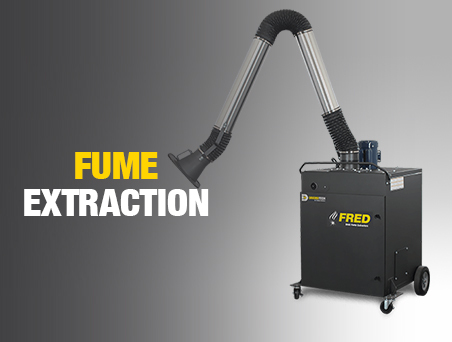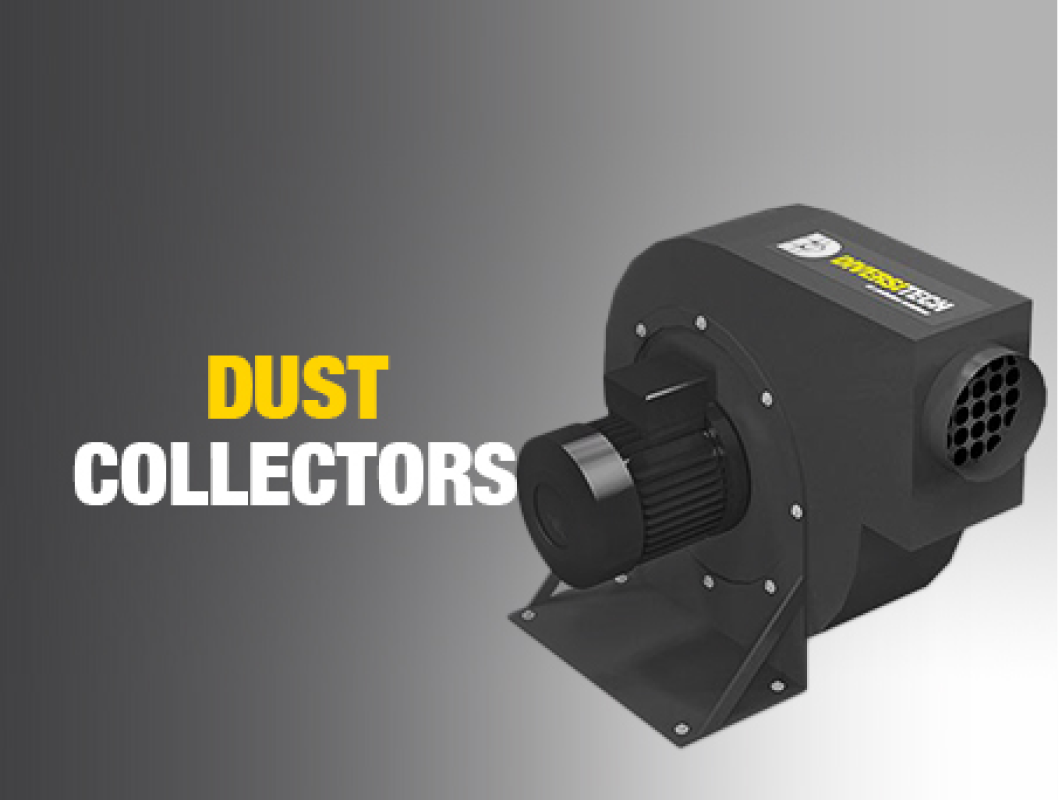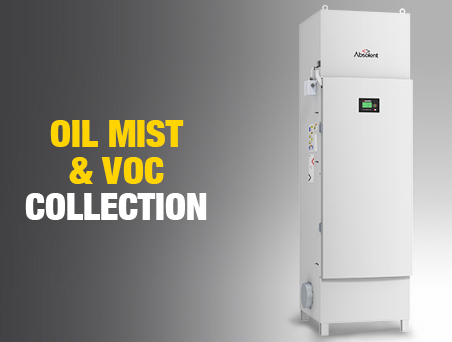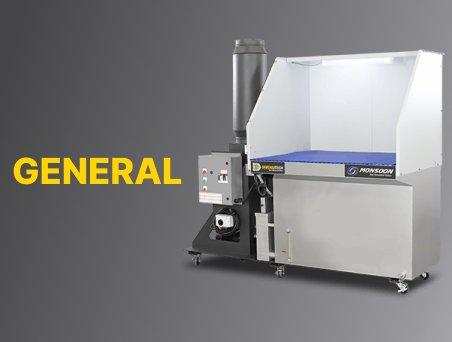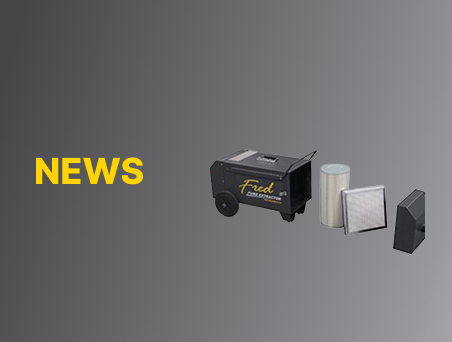Understanding VOCs
Noxious paint fumes, benzene, acetone- these are all substances commonly used in the industrial sector that can be classified as volatile organic compounds. Volatile organic compounds, commonly abbreviated to just VOCs, are solvents which can evaporate under normal indoor atmospheric conditions due to their high vapor pressure and low water solubility.
In industry it’s not unusual for workers to wave off exposure to VOCs, but the fact of the matter is that prolonged or repeated exposure can lead to serious health complications. Inhaling VOCs for just a short time can result in acute effects such as headaches, nausea, lung irritation, and more. With repeated exposure, health issues as severe as respiratory diseases or even organ failure can befall the toughest workers. Nobody is immune to the health hazards of VOCs, so they should be addressed seriously despite how lightly they are taken in today’s industrial culture.
In order to properly address your own facility’s VOC generation to protect your personnel, it is imperative that you first fully understand the processes which emit those VOCs in the first place.
VOCs Across Different Industries
In a broad sense, there is a high likelihood that any process in your facility which generates fumes is also one that generates VOCs. It is important to note here that VOCs only encompass compounds though; other toxic fumes such as hexavalent chromium, although extremely carcinogenic, do not fall under the VOC umbrella.
Here are a few practices within the manufacturing sector that commonly result in the emission of VOCs.
Painting & Powder Coating
The fumes released by spray painting and coatings may be the most common source of VOCs, both in industrial practices and in the homes of many. While the paint and coatings themselves can cause a host of health issues when inhaled thanks to the presence of metallic flakes and toxic chemicals, the real VOC risk comes from the solvents used to thin the paint down to a sprayable consistency. For this reason, VOCs cannot be entirely cut from the spray painting process; however, they can be managed with the right tools at your disposal.
Although uncommon, powder coating can also release harmful VOCs if not executed properly. It is imperative for technicians to follow all application procedures to ensure their own safety.
In both operations, VOCs can be released during the surface preparation stage. It is common to use solvents including alcohol and degreasers to remove oils from work surfaces to prepare them for painting.
Some of the industries that most usually utilize spray paints and powder coating applications include:
Table of Contents:
Chemical Manufacturing & Reagents
It should be no surprise that chemical manufacturing puts workers at very high risk of exposure to VOCs. Spending extended periods of time in close quarters with large quantities of chemicals can be detrimental to employee health if they are not properly equipped to minimize the degree of contact that they have with hazardous substances.
The same can also be said for those who have to work with small quantities of chemical reagents that release VOCs, or those that have to work with solvents infrequently. They may be more likely to dismiss the risk of potential health effects due to the nature of their chemical exposure, but the risk remains present all the same.
Workers from the following industries are at risk of exposure to VOCs:
- Pesticide Manufacturing
- Plastics Manufacturing
- Textiles
- Rubber & Elastomer Manufacturing
- Electronics Manufacturing
- Semiconductor Manufacturing
Exhaust Fumes
The following industries commonly expose workers to exhaust fumes:
- Automotive
- Diesel
- Aerospace
- Metal Forming
Need help identifying VOC sources at your facility? Contact Diversitech today and get guidance from our air quality management professionals.
How to Minimize Exposure to VOCs
The release of VOCs may be inevitable in most manufacturing processes that produce them, but that doesn’t mean that their adverse health effects have to be inevitable too. In fact, there are many steps that can be taken to minimize the health hazards associated with VOCs. The key to combatting these risks is to be proactive in reducing the presence of VOCs to diminish their effects. The following safety measures are some of the most important steps you can take against airborne health hazards.
Proper Ventilation
The first step you can take to reduce the effects of VOCs in your facility is to ensure proper ventilation at all times. You should regularly conduct checks for the following ventilation parameters:
- Make sure that your air ducts are all properly sealed with no leaks
- Check that all fans are running properly
- Prevent overheating by clearing all exhaust outlets
- Change filters according to instructions
Effective PPE
Personal protective equipment, or PPE, is the last line of defense between your personnel and chemical exposure. When safety procedures fail or when accidents happen, it may be a pair of gloves or a set of safety glasses that prevents somebody from experiencing serious harm from a hazardous chemical. VOC exposure is no different. Proper PPE like safety glasses could be what prevents your workers from developing ocular issues over time; proper respirators can help filter out VOCs before they enter any airways; masks can prevent material buildup in the lungs; and so on.
Fume Extraction
To address VOCs directly, Diversitech’s collection of fume extractors allow for VOCs to be captured at the source. Our portable fume extractors can be positioned at any workstation thanks to a set of rugged castor wheels and an adjustable capture arm. For a stationary solution, we also offer the same fume capture technology in a wall-mounted configuration.
Our FRED Carbo Portable VOC Extractor is designed specifically for VOC capture applications. This model features a double sided, activated carbon filter for effective VOC adsorption and a high performance blower for maximum filtration capability.
Downdraft Tables
Another type of capture-at-source solution that we offer at Diversitech is our collection of downdraft tables. These tables are equipped with high power blowers and are available with a variety of accessories and filters to suit different applications. For VOC capture, our Spray Painting Kit comes with:
- Side and Back Walls
- Paint Arrestor Pre-Filter
- Polytech 100% Polyester Spun Air Filter
- Reversible Carbon Canister Afterfilter
Now that you know more about VOCs and the risks they introduce to your workforce, start identifying the processes that you can address at your own manufacturing facility. By implementing the above safety measures on your shop floor, you can minimize the health risks associated with the inhalation of VOCs. For fume extractors, downdraft tables, and other VOC management solutions, contact the air quality experts at Diversitech. We have the technology you need to help keep your workers healthy and safe.
Contact Diversitech today to learn more about our air quality management measures designed specifically to combat VOCs in your industry.
- Topics:Fume Extraction, VOC's
Related Products
Oil Mist Collectors

The Absolent A•erity family carries advanced oil mist filters that are best suited for CNC machining, grinding, and forming/pressing machines that are running high RPM and high coolant pressure.
FRED SR
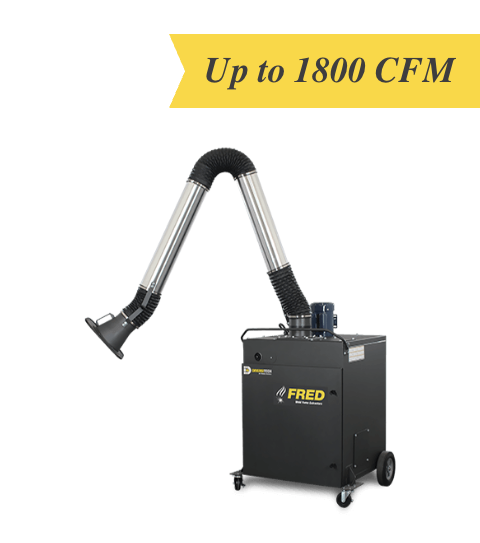
The industry standard for eliminating smoke, dust and fumes, the FRED Sr. is a professional grade fume extractor.
Wet Downdraft Table

TYPHOON WX


